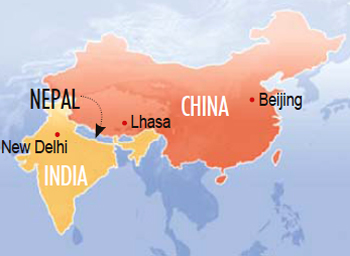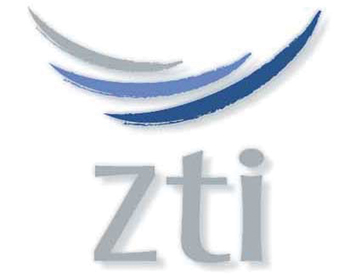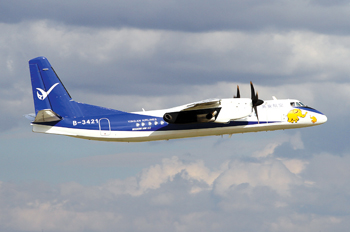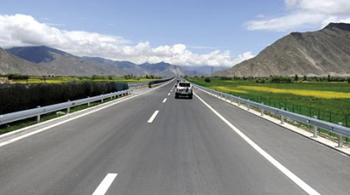When Chinese president Xi Jinping spoke at the Boao Forum in Hainan in April, he underlined that China’s prosperity wasn’t possible without the prosperity of its neighbours.
Indeed, China’s position as the second biggest economy in the world has impacted in its periphery. This is most pronounced in East and Southeast Asia, but increasingly in South Asia. China is now India’s biggest trading partner, and Chinese investors and businesses have a strong presence in Bangladesh, Sri Lanka and Pakistan.
Nepal shares a 1,000km long Himalayan border with China, and Chinese investment, trade and tourism with Nepal has also been growing exponentially. A Chinese business delegation that visited Kathmandu this month expressed interest in investing in energy, infrastructure, tourism, agriculture and mining in Nepal.
“Every fortnight or so we get a Chinese investors’ delegation visiting Kathmandu these days,” says Rajesh Kaji Shrestha of the Nepal-China Chamber of Commerce. Statistics tell the story: Chinese investment in Nepal has grown six fold in the last ten years. Bilateral trade grew from Rs 10.7 billion ten years ago to Rs 53 billion this year. Although the balance of payments deficit has been growing, Nepal exported over Rs 2 billion worth of goods to China in the first eight months of this fiscal year, compared to only Rs 980 million last year. This was after China granted tariff incentives for 7,757 items.
Chinese investments in Nepal which started with small-scale outlays in restaurants has now grown to include hospitals, hotels, software companies, construction, airports and hydropower. Nearly half the applications for new investments in Nepal are from Indian companies, and 10 per cent from Chinese, but the latter is growing much faster. The biggest interest from China is for hydropower projects, with Three Gorges interested in investing Rs 140 billion in the 750MW West Seti reservoir project. The Chinese are also involved in the 60MW Trisuli 3A, the Upper Marsyangdi and Upper Madi projects as joint ventures. China’s Exim Bank has agreed to grant Rs 3.8 billion for the purchase of five Chinese turboprop aircraft for Nepal Airlines and construction of the Rs 13 billion new Pokhara International airport.

Chinese exports to Nepal have exploded in the past ten years. Affordable Chinese apparel have transformed the way Nepalis dress, and Chinese electronic goods and vehicles have flooded the market. To facilitate this burgeoning trade, China is helping build a Rs 200 million dry port at Larcha near Tatopani and to upgrade the Kodari highway. China is also upgrading the border facilities at Rasuwa Gadi, anticipating that most trade will move there once the highway on the Nepali side is complete and the Chinese railway network arrives in Kerung via Xigatse.
In infrastructure, it appears as if Chinese contractors have a monopoly in hydropower, airport and telecom projects in Nepal. In most energy projects, the civil works, hydro-mechanical and electronic contracts are being carried out by Chinese companies. Sino Hydro is building the civil works in the 456MW Tamakosi Project and Kulekhani III. A Chinese company is even building the Korean-financed 30MW Chameliya Project in western Nepal.
However not all the experiences with Chinese contractors have been good. The contractors building the Melamchi Project left after their demand for a 200 per cent cost increase was not met. Only 6km of the 26km tunnel was dug. Chameliya, which was supposed to be finished this year has also been delayed after the Chinese contractor left. The Upper Trisuli 3A was mired in controversy over a decision to increase project capacity, leading to a cost overrun.
Despite this, Chinese contractors still outbid most international rivals, and have amassed experience in working in the Nepali situation. Nepal Telecom, plagued with chronic overcapacity, has gone with China’s Huawei for a Rs 10 billion upgrade of its telecom infrastructure. Even the private sector Ncell works with ZTI.
Tourism is another area where there is huge potential for growth. In 2000, just under 4,000 Chinese tourists visited Nepal. This year, it has grown to more than 53,000, and Chinese now make up nearly 10 per cent of all arrivals. Air China, China Eastern, China Southern and Dragon Air, now have nearly 20 flights a week to destinations in China. If seat capacity is improved andwith better promotion, Nepal could attract vast numbers of Chinese tourists.
TELECOM

**Huawei has bagged a Rs10billion upgrade of Nepal Telecom

**ZTI is working with Ncell on its mobile infrastructure
AVIATION

**Rs 3 billion soft loan to buy five turboprops for Nepal Airlines
**Rs 13 billion soft loan for a new international airport in Pokhara
HYDROPOWER

**Rs140 billion in the 750MW West Seti Project by Three Gorges
**Rs 10 billion soft loan for the 70MW Upper Trisuli 3A
**Additional projects: Upper Marsyangdi, Upper Madi
TRADE

**Rs 53 billion Nepal’s imports from China (apparel, electronics, vehicles)
**Rs 1 billion China proposes to invest in Nepal in the coming year to generate employment for 3,000

**China’s Exim Bank interested in opening in Nepal
INFRASTRUCTURE

**Tatopani Dry Port and customs infrastructure in Rasuwa Gadi, Olangchung Gola, Mustang and Lamabagar
**Completing the remaining 18km segment of the Syabru-Rasuwa Highway
**CGGC is building the Upper Trisuli3A, and Pokhara airport
**Chinese contractors are building Chameliya, Kulekhani III and other energy projects
**New apartment construction by Chinese contractors
Read also:
China’s growing growth
It’s a win-win situation
China’s e-tail revolution